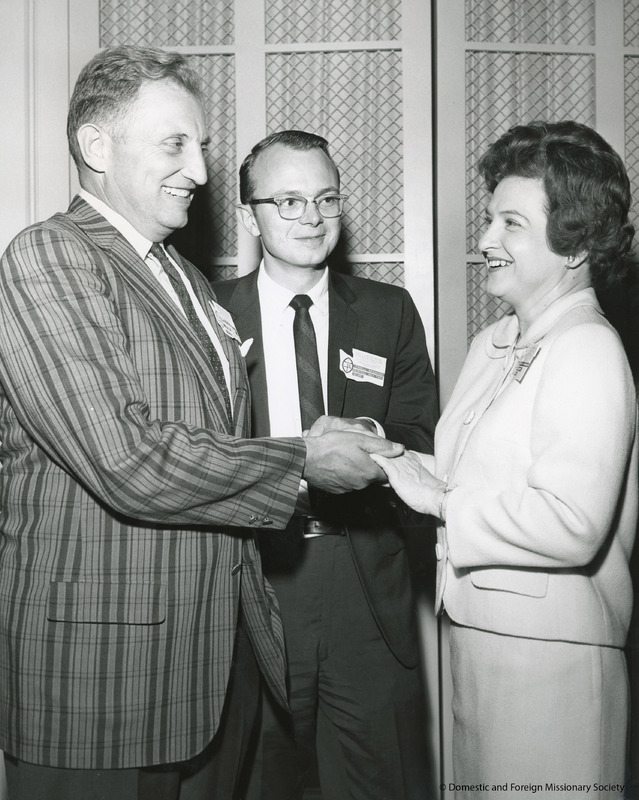Cost of Integration
During the 20th century, the success of women’s suffrage, the industrialized economy, and the increasing visibility of middle-class women in the work force caused a shift in the expectations of American women, and churchwomen were no exception. Increasingly, the term “women’s work” felt outmoded and condescending to women who were fighting for their equal place not just in the church but in the world.
After Julia Emery's retirement in 1916, an Executive Board of the Woman's Auxiliary was created to share decision-making with the new Secretary, Grace Lindley, formalizing the structure in line with modern business practices. By the time of Julia Emery's death in 1922, the Woman's Auxiliary was a tight network of women skilled in organization and leadership, and as the 20th century progressed, many of those women were increasingly unhappy at the male-dominated church’s refusal to open up any substantive institutional power to them.
At first the men of the church seemed poised to recognize the professionalism of the women, yet the expectation of equal representation quickly gave way to a disappointing reality. Most committees of the church were composed of equal numbers of bishops, clergy, and lay representatives. By default, women could make up at most a third of a committee’s membership in the unlikely event that no male lay members were present. Early hopes for true representation on the Executive Council were slowly disappearing.
In the midst of a general upheaval in the structure of the church during the 1967-1970 triennium, the General Division of Women’s Work dissolved and became the Committee of Women, a committee of Executive Council. In 1970, this committee recommended to the General Convention that it be replaced by two committees: one for Lay Ministry and one for the United Thank Offering, which was subsequently approved.
Frances Young was appointed as Executive Officer of Lay Ministries, reporting to the Presiding Bishop, but budget cuts and nearly constant restructuring moved her position farther and farther down the organizational hierarchy until, in 1972, her frustration caused her to take early retirement. She was replaced by a man. A woman was appointed under her male successor as a staff member “for women.” No staff officer remained to represent the Episcopal women as a united body.
The United Thank Offering, previously organized under the General Division of Women’s Work, was separated and placed into the Jurisdictional Operations division and later, the National and World Mission office. Its traditional link with the Woman’s Auxiliary and The Episcopal Church Women was not completely severed by this move, as the UTO Coordinator’s job was to maintain contact with the diocesan Episcopal Church Women groups. The UTO funds were no longer under the direct control of the women of the church and many women felt increasingly set adrift by the new structures.
While opportunities for serving the church through its official structures had increased and would expand further with the ordination of women, still, many women felt the loss of the indepencence provided by the earlier organizations that supported their sisters in Christ and the causes they championed.

Memorandum on equal participation in church leadership, 1969.

Letter inviting participation in a Task Force on Women conference, 1976.

